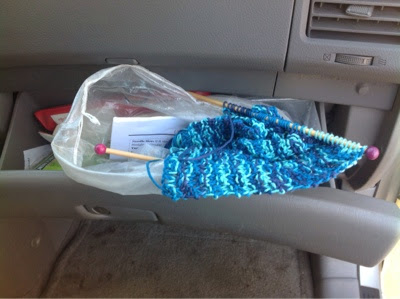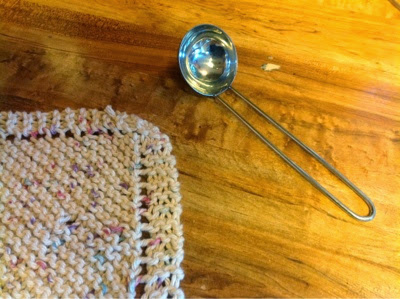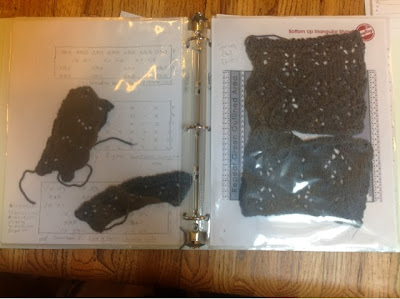I got an email today about the Vefr Shawl that said:
I downloaded the Vefr Shawl pattern thru Ravelry. My question is … if you perform the set up row, which is cast on 5 stitches and proceed thru Chart A, how do you end with 71 stitches? What am I missing?
Here was my response with added pictures:
If you look at Chart A (below), you’ll notice there is a yellow outline around the charted wedge and another yellow section to the left of the chart where you repeat the yellow outlined area. These two wedges are the two halves of the shawl on either side of the middle spine that runs down your back. So after casting on five stitches, in the first row of the chart you knit 2 (these become the right top border edge), yarn over (the first stitch of the right hand wedge), knit 1 (the center spine stitch), yarn over (the first stitch of the left hand wedge which is shown as a yellow area on the chart), and then knit 2 (these become the left top border edge). You’ve used up all the five cast on stitches and are ready for row 2 of the chart, which is a wrong side row. On this row, starting on the left hand side of the chart, you will knit 2 (top border edge), perl 3 (one for the left hand wedge, one for the center spine, one for the right hand wedge), and knit 2 (other top border edge). Now you have seven stitches because the yarn overs have added two new stitches to the stitches on your needles. The first time I did this is was sort of magic!
On ever row you are working two wedges, the one shown and the one that is only indicated by the yellow block. Starting on row 3, you add 4 stitches in each right side row by adding yarn overs on either side of both the right and left hand side wedges. Eventually after ten rows or so, you’ll be able to slide your work down your circular needles and pull on that center stitch and see the shape of the shawl emerge with the top border edge stitches going straight across your work and the stitches on the circulars forming a V shape with the center stitch at the point. By the end of Chart A, you will have 71 stitches on your needles!
If you could draw the chart with all the “no stitch” areas taken out and oriented more the way the real stitches will flow, it might look something like this:
Of course, knit stitches are more rectangular than square and so your shawl becomes more of a triangle. Do you see how I have those first five stitches more as an arc? All those yarn overs push the knitting out so that it forms the nice triangle shape we expect of a shawl. But those first five stitches do leave a little gap at the top, which is why in the finishing instructions to this shawl, I’ve suggested you use the cast on tail to sew together the first and fifth stitch to close that gap before weaving it in.
I have you place markers around the center stitch in row 1 so that you can use that as a reminder to repeat the wedge when you hit the center marker.
KnitPicks has some excellent tutorials for reading charts, including a video about reading charts and a short written tutorial that discusses those no stitch spaces.











